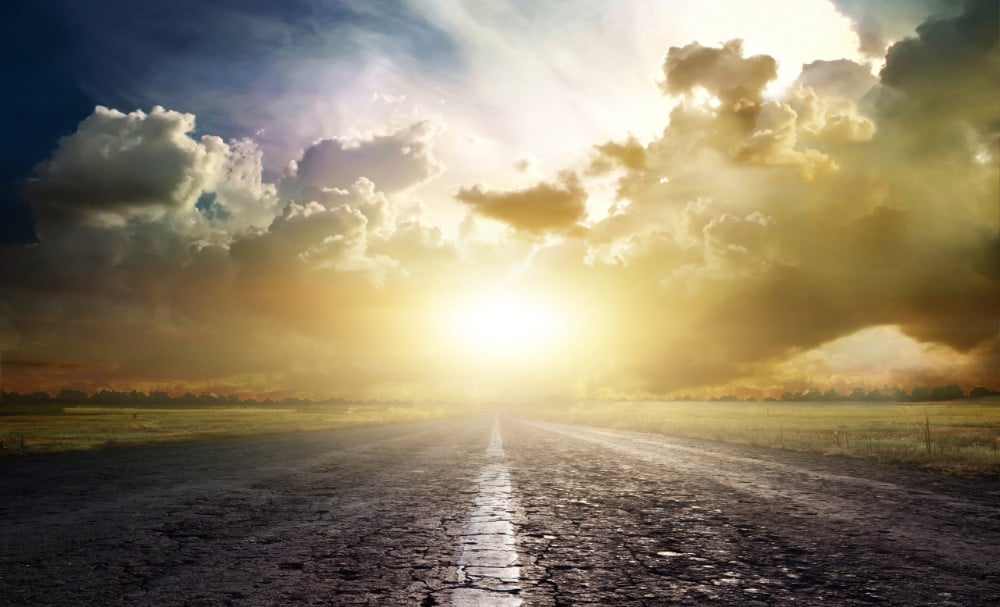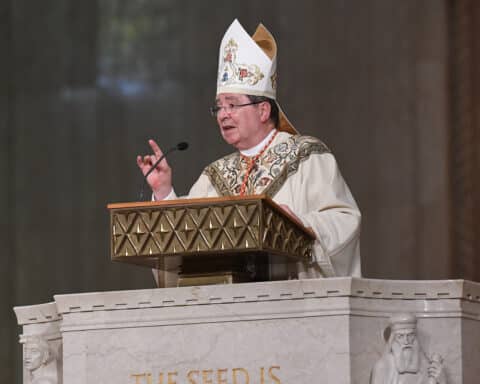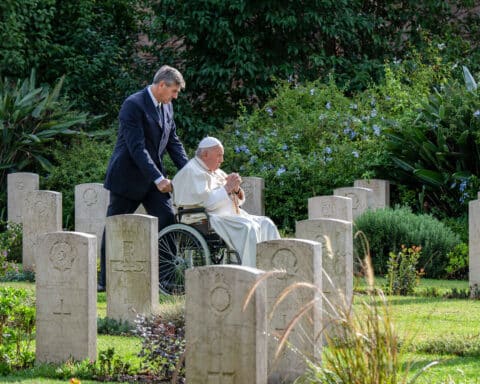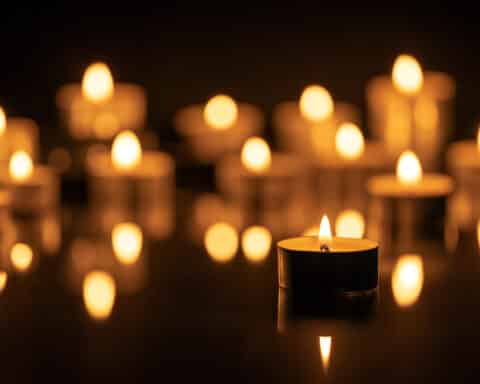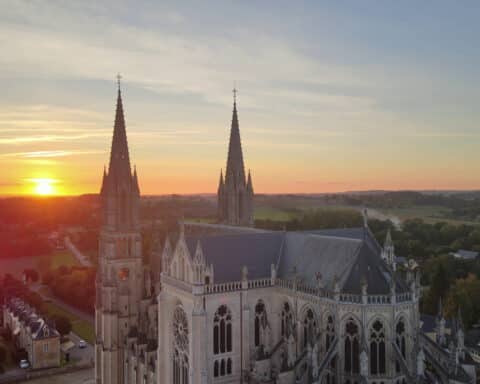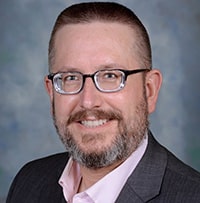
But reflecting on our ultimate end in the next world, and what it will take, even after this life, to get there, should bring us back to our pilgrimage here on earth. Is there a better point in the Church’s liturgical calendar than these two days to awaken in us the recognition that this life is a pilgrimage, a daily journey toward an end that we can never reach while we are alive but will only reach after our passing from this world if we live our life as a pilgrimage?
In the modern world, with our minds shaped by nearly three centuries of a mechanistic understanding of nature that sees every change as an effect of a cause that precedes it, the very idea that there is an intrinsic purpose to our lives that lies ahead of us rather than behind is hard to comprehend. We can accept that an acorn planted in the ground, and given sufficient water and nutrients and sunlight and protection from the elements and from predators, will one day grow up to be a mighty oak tree; but the recognition that the oak is, and always was, the end of the acorn, the purpose for which the acorn exists, is harder for us to accept. That requires an imaginative grasp of reality that goes beyond the accepted boundaries of our supposedly scientific, but ultimately merely mechanical, worldview.
Thirty years ago, Vice Admiral James Stockdale, running on the Reform Party ticket alongside Ross Perot, began the 1992 vice presidential debate with Al Gore and Dan Quayle by asking two questions: “Who am I? Why am I here?” In those pre-World Wide Web days, Stockdale became a meme in the way one did back then: The late comedian Phil Hartman took his words and played them to comic effect in a sketch on Saturday Night Live. We all laughed, and some of us continue, three decades later, to use those lines to break the ice in uncomfortable situations.
Despite the ridicule heaped on him, the questions Admiral Stockdale asked are the very ones that each of us ask ourselves in those increasingly rare moments of silence and solitude in a world that values neither. To understand who we are, we need first to understand why we are here. And we recognize that the answer that the mechanistic worldview gives us — that we are here because a series of random events created life from non-life and humans from non-humans — is unsatisfying at best, and not only because it cannot explain what random event allowed consciousness to rise from non-consciousness. It is unsatisfactory because, deep down in that consciousness, which we intuitively recognize is not just another effect of a long series of mechanical causes, we realize that the question “Why am I here?” requires an answer that lies ahead of us, and not behind.
The saints point the way to where that answer lies. Our dear, departed loved ones walked the road that we now tread. They beckon us to join them.
“Why am I here?” Because this is how I get there.
Scott P. Richert is publisher for OSV.

